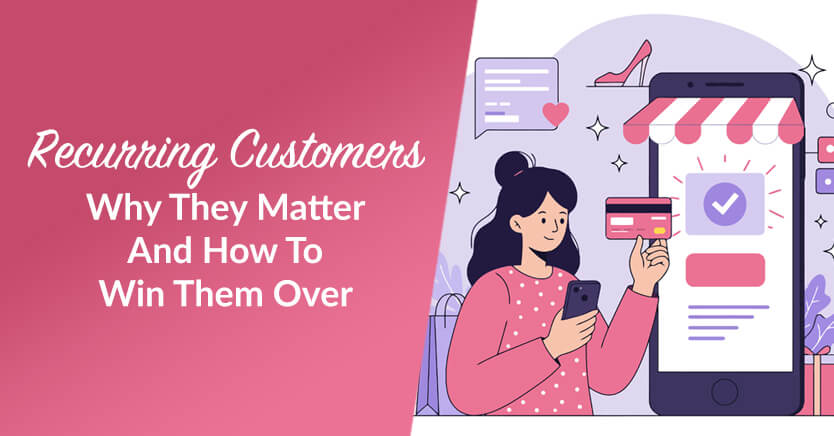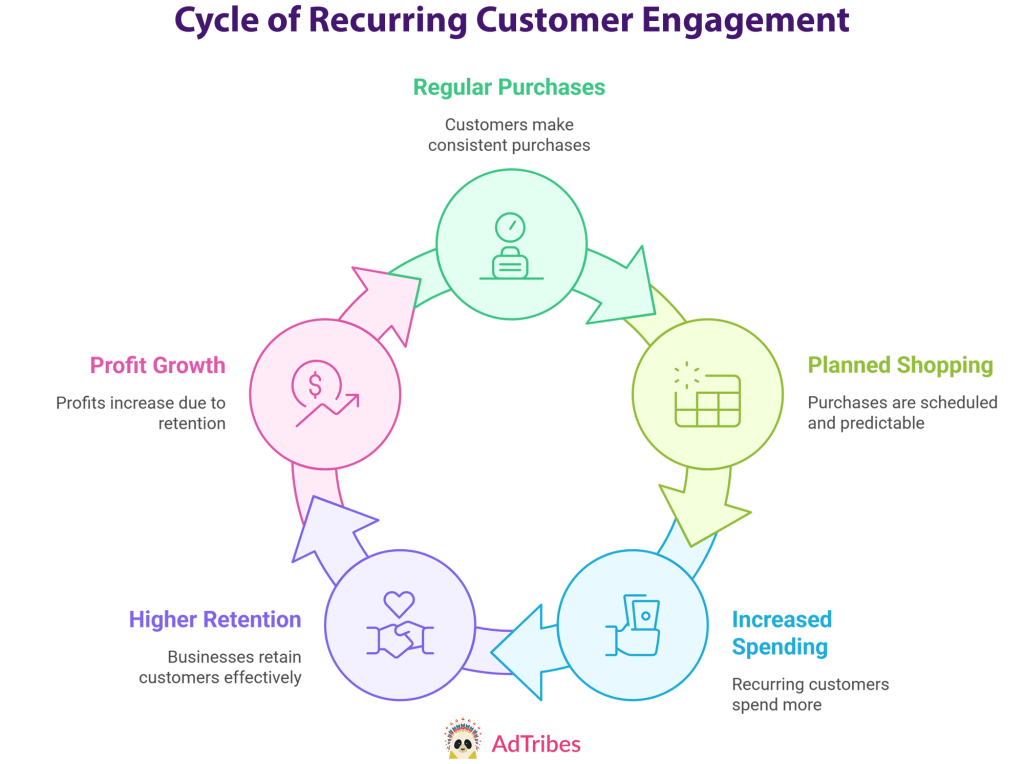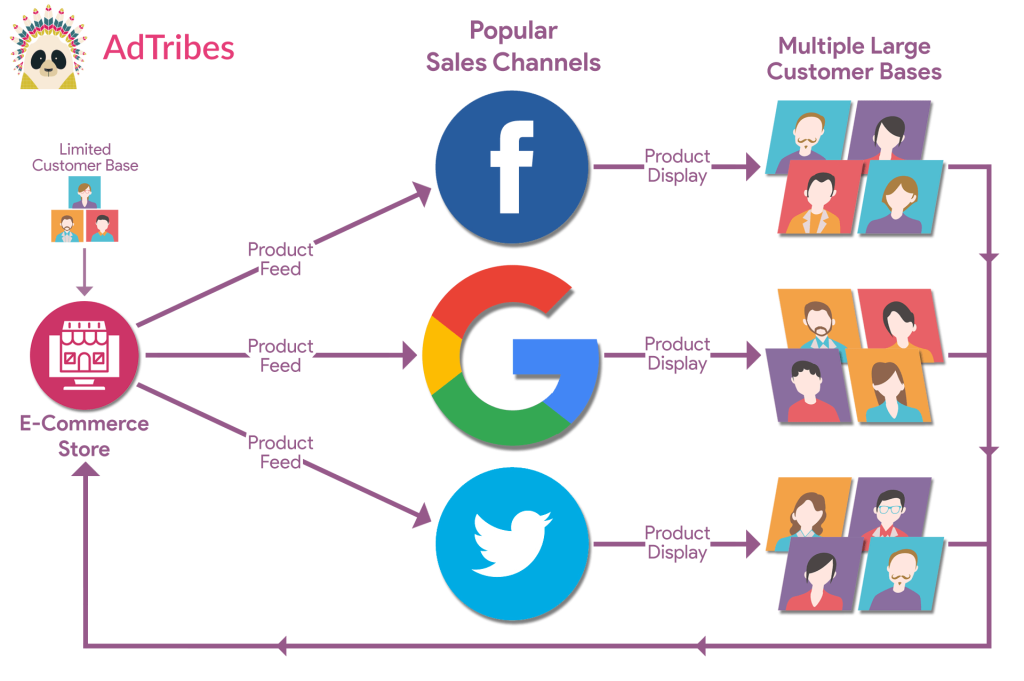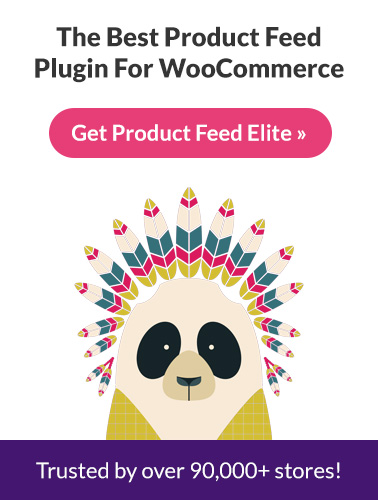
Recurring customers are what every store hopes for. They come back again and again, keeping the shop running like a well-oiled machine.
Stores that focus on getting these customers usually grow more steadily. Their sales don’t swing wildly from week to week.
In this article, we’ll break down what recurring customers are. We’ll also look at how they differ from similar types of shoppers, what kinds of recurring buyers exist, and how to get more of them. Then, we’ll show how product feeds can help stores reach new shoppers and build loyalty of their own.
So let’s get cracking!
- I. What Is A Recurring Customer?
- II. Types Of Recurring Customers
- III. Attracting Recurring Customers: 8 Effective Strategies
- IV. How Product Feeds Help You Grow Recurring Customers
- Conclusion
I. What Is A Recurring Customer?
A recurring customer is someone who shops from the same store on a regular schedule, often through a subscription or automatic order. Their purchases follow a set pattern, like clockwork. This might mean ordering once a week, once a month, or whenever it makes sense for the product.
Think of someone who always buys pet food at the start of every month. They aren’t just popping in now and then; their shopping is planned and steady, making them a reliable part of the store’s customer base.
The consistency these existing customers create makes a big difference for planning and steady sales.
Here are some fascinating statistics related to recurring customers:
- Shoppers who return and buy again tend to spend about 62% more than one-time buyers.
- Even a small 5% bump in retention can lead to a big jump in profits, anywhere from 25% to 95%.
- Businesses that put more effort into holding onto current customers instead of chasing new ones can earn about 60% more.
- Bringing in a new customer (a.k.a. customer acquisition) can be quite expensive, with some reports suggesting it may cost up to five times as much as keeping an existing one.
- There’s a 60 to 70% chance of selling to someone who’s already bought before. For new customers, that chance drops to just 5 to 20%.
Simply put, recurring and repeat customers spend more, more often.
In addition, recurring and repeat customers promote brands they love, meaning they can help you attract new shoppers through word of mouth and social proof.
All this shows how important it is to keep customers coming back to your store.
What sets recurring buyers apart from the rest?
Some shoppers pop in once. Others come back now and then. But recurring customers stand out because they follow a steady rhythm.
Here are other types of buyers and what set them apart from recurring customers.
- A one-time buyer makes a single purchase and doesn’t return. They might be trying your store for the first time or just need something specific.
- An occasional buyer comes back now and then, but there’s no clear pattern. Months might pass between orders, and their shopping habits are hard to predict.
- A returning customer bought once, then came back again later. But it’s not something they do often. Their visits are more random than routine.
- A repeat customer has made several purchases from your store. They’ve formed a habit, but there’s still no fixed schedule. The repeat customer comes back regularly, just not on a set timeline.
Some people treat the “recurring customer” and “repeat customer” as the same thing, but they’re not.
The recurring customer sticks to a pattern. They buy on a schedule, like every week or month. On the other hand, the repeat customer is consistent, but not always predictable.
However, both types are closely related; both involve customer retention and create a major benefit: repeat business and recurring revenue.
II. Types Of Recurring Customers
Recurring customers come in different types. Each type shows a unique way people keep coming back. Understanding these types is like seeing the many ways a clock can tick.
Here’s a look at some common types of recurring customers and what makes them special.
1. Subscription-based shoppers
These customers set up a schedule to receive the same products repeatedly. The process is automatic, so they don’t have to think about reordering. It runs in the background like any other routine service.
A gym-goer might subscribe to get their favorite protein powder every month. Or someone could sign up for monthly vitamin deliveries to stay consistent with their health goals without having to remember to reorder. Whatever the product, it arrives just as they run low, keeping their routine on track.
2. Routine re-orderers
Routine re-orderers follow a regular buying schedule, even without a subscription. They plan ahead and buy products before they run out. Their purchases can include a variety of items, not just things that get used up quickly.
For example, someone might buy dog food every six weeks because that’s when their bag usually runs out. While they don’t have automatic orders, they remember to restock on a steady schedule.

3. Refill buyers
Refill buyers specifically replace products that get used up and need frequent replenishing. These items are usually essential and must be replaced often to avoid running out. Their buying cycle depends on how fast they consume the product.
For instance, a person might reorder printer ink every few months to keep working without interruption. Or someone could buy cleaning sprays regularly to maintain a clean home. These customers don’t use subscriptions but make sure to refill items as needed.
4. Loyalty-driven buyers
These shoppers return because they trust and like a brand. They’ve had good experiences and feel confident in what the store offers, and over time, their trust turns into loyalty. While they don’t always set a schedule, their habits can still form a pattern over time.
For example, someone who restocks their favorite skincare products every month from the same store. They aren’t subscribed, but their buying becomes part of their routine. If their timing stays steady, even without automation, they start to fall closer to the recurring customer group.
5. Seasonal or event-based buyers
These customers come back at certain times of the year. Their shopping follows a rhythm set by seasons or special events. They plan their purchases around these moments, knowing when it’s time to buy again. This kind of buying is less about habit and more about timing tied to the year’s cycle.
For instance, someone might buy gifts from your store every holiday season. Or a gardener might return each spring to order fresh seeds. A retailer could also stock up on supplies every Black Friday to prepare for the busy season. In all three cases, their timing is predictable, even if it’s spread out.

6. Occasional bulk buyers
Some customers spend large amounts but only a few times a year. They don’t shop often, but when they do, the orders are big, like restocking everything at once.
If these big hauls happen on a regular schedule, they count as recurring. For example, a family that stocks up on cleaning supplies every three months fits the recurring mold.
7. Service subscribers
Service subscribers sign up for ongoing services instead of buying physical products. Their payments happen on a regular schedule, often monthly or yearly.
For example, someone might pay every month for a meal kit delivery or a streaming service. These customers rely on the service as part of their routine.
8. Upgrade seekers
Upgrade seekers return regularly to buy the newest version of a product. They want the latest features or designs and don’t just stick with what they have. Their purchases follow product release cycles instead of a fixed schedule.
For example, someone who buys a new smartphone model every year is an upgrade seeker. They plan their buys around new releases and like to stay up to date. This makes their shopping predictable but tied to upgrades.

Each type of recurring customer has its own rhythm and reason for coming back. The key difference is the pattern that sets them apart from repeat customers.
Knowing these types helps plan better ways to keep customers happy and shopping regularly.
III. Attracting Recurring Customers: 8 Effective Strategies
Repeat and recurring customers are the lifeblood of many stores. They keep coming back because they find ongoing value. Attracting more of them means a steady cash flow and a stronger business.
There are clear ways to encourage customers to return regularly. These strategies focus on making shopping easy and rewarding. They also build trust and keep customers engaged.
With that in mind, here are some key ways to attract more recurring customers:
1. Offer value beyond the first purchase
Attracting recurring customers means giving them more than just the product they bought. Sharing helpful tips or useful information can show that the store cares about their experience.
Special offers tied to their interests also make customers feel valued. This extra value creates a stronger connection that encourages repeat visits.
For example, a store selling gardening tools might send seasonal advice on planting and care. Along with that, they could offer discounts on seeds or fertilizers. This kind of support and savings makes customers want to return.
2. Build trust and consistency
Being reliable means your products and services stay good every time. Customers come back when they know they won’t be disappointed.
Consistency is like a handshake, steady and dependable. It creates comfort and shows you care about their experience.
For example, a clothing store that always offers well-made items and friendly help will see customers return. People trust that their next purchase will be just as good as the last one.
3. Make re-ordering easy
To increase repeat customers and recurring customers, make it simple for shoppers to buy again. Let them save their favorite products and payment details. Quick checkout or one-click reorder options help cut down the time it takes to buy.
Let’s say a store lets customers reorder pet supplies with just a few clicks, making shopping feel effortless. This convenience encourages customers to come back more often.
4. Reward repeat behavior
Encouraging customers to keep coming back can be as simple as saying thank you with rewards. Discounts, points, special offers, or customer loyalty programs make customers feel appreciated. These incentives create a little extra motivation to choose your store over others.
For instance, a clothing store might offer a customer loyalty program where shoppers collect points for every dollar spent. Later, they can use those points for discounts or special offers. This turns casual buyers into loyal customers who keep coming back.

💡 Take note: With Advanced Coupons, you can create a range of customizable promotions, including coupons, BOGOs, loyalty programs, and gift card options.
5. Stay connected with timely messages
Sending reminders or helpful updates helps customers remember when to reorder. Friendly texts or email marketing keep your store fresh in their minds. These messages work like gentle nudges, making it easier for customers to come back without thinking too much about it.
Imagine a skincare brand sending a message when a customer’s moisturizer is likely running low. The note could include tips for using the product or a special offer to encourage the next purchase. This keeps the relationship active and shows the brand cares about the customer’s needs.
6. Provide excellent customer service
Fast and helpful answers make people feel valued and secure. When they know they can get customer support easily, they trust the store more. This confidence makes them want to come back for future purchases.
For example, an online electronics store that offers live chat to solve issues quickly can turn a frustrated buyer into a loyal customer. Exceptional customer service shows that the store cares beyond just the sale.
7. Personalize the experience
Using what you know about customers helps tailor their shopping journey. When offers and products match their interests, it feels like the store really gets them. These personal touches can make shopping easier and more enjoyable.
Picture an online clothing store recommending jackets to a customer who bought winter boots last year. This kind of thoughtful suggestion makes customers feel seen and keeps them coming back.
8. Make customers feel appreciated
Showing gratitude makes a big difference in how customers feel about your store. A simple thank-you note or a small gift can turn a one-time buyer into a loyal shopper. These gestures remind people they matter beyond just the sale, and thus help increase repeat customers and recurring customers.
For example, a bookstore might include a handwritten thank-you card with every order or send a surprise bookmark as a gift. These small acts make customers feel special and encourage them to return.

By focusing on these strategies, stores can turn occasional buyers into steady, recurring customers. It’s all about making the experience smooth, rewarding, and trustworthy.
IV. How Product Feeds Help You Grow Recurring Customers
Attracting recurring customers to your store can be a smart way to build long-term business success.
Product feeds can help make this easier. But what is a product feed?
A product feed is a file containing your products’ extensive details, such as product names, descriptions, prices, image URLs, stock status, and more.
With that in mind, here’s how product feeds can help you attract recurring customers:
1. Multi-channel selling
When you send a product feed to a sales channel, you’re sharing your product details with that platform. This lets the channel display your products to its users.
Imagine sending your feed to Google Shopping. When your products appear on the platform, you reach shoppers who already trust and use it. That can help bring new loyal customers to your store.

Here are some of the sales channels where you can showcase your products courtesy of product feeds:
- Google Shopping
- Bing Shopping
- Snapchat
- TikTok
- Shopping.com
- Wish
- idealo
- Kogan
- PriceGrabber
- Kelkoo
- … and more!
With the right product feed tool, you can create multiple feeds and send them to as many sales channels as you like. For example, your products can show up on Google Shopping, Facebook, Bing Shopping, TikTok, and Wish all at once.
2. Accurate product listings
Product feeds automatically update your listings on multiple channels, keeping everything accurate and consistent. For example, when someone buys a product on one channel, the correct stock status shows up on others.
Keeping your product listings fresh is important. Accurate prices, stock, and details help shoppers feel confident. No surprises or second-guessing; just clear, reliable information that prevents confusion and frustration caused by wrong information.
Remember: consistency makes your store more trustworthy, eventually building customer loyalty that encourages people to come back.
3. Brand consistency
Consistent product info across channels builds a sense of familiarity and trust with your customers. When shoppers see the same product names, descriptions, and images on different websites or apps, it feels like they’re dealing with the same reliable store every time.
This steady experience makes them more comfortable buying from you again. It’s like walking into a shop where everything is just how you remember it: comfortable and dependable.
For example, if a customer sees a jacket on your website with a certain description and image, then finds that same jacket with matching details on Facebook Marketplace or Google Shopping, they’ll feel confident it’s the same product from your store.
This consistent experience encourages them to return because they know what to expect. The result? Recurring revenue!
Product feeds help you attract recurring customers by putting your products where loyal buyers shop, keeping listings accurate, and supporting your brand’s trust. These steps create a smoother path for customers to return.
Conclusion
Recurring customers bring stability and steady growth to your store. So, to build loyalty that lasts, you should understand your shoppers’ habits and use smart strategies like providing great customer service, rewarding repeat behavior, and more.
Product feeds make it easier to reach these shoppers across multiple channels, keeping your business thriving. Focus on trust, convenience, and consistent experiences to turn one-time buyers into reliable returning customers.
To recap, this guide explored the following ideas:
- What is a recurring customer
- Types of recurring customers
- 8 effective strategies for attracting recurring customers
- How product feeds help you grow recurring customers
Want to use product feeds to sell on multiple channels and grow your recurring customers? Check out AdTribes, a top-rated product feed solution for WooCommerce!





